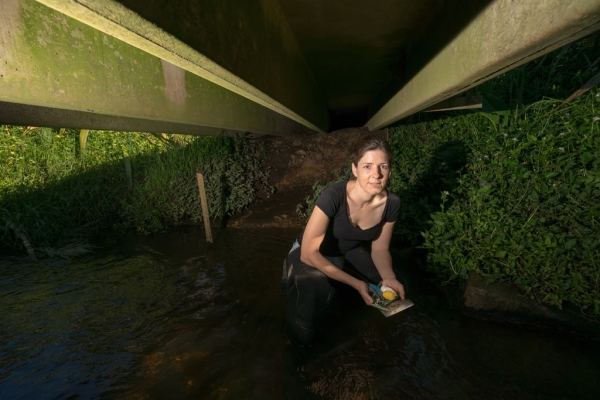It may be rubbish to everyone else, but to Amanda Valois each little scrap of plastic on a river bank or in a waterway tells a valuable story.
Inspired by the beach clean-ups volunteers have been doing around New Zealand over many years, the NIWA scientist is on a mission to stop that rubbish accumulating in the first place.
“There’s a lot of interest in New Zealand about the amount of plastics on beaches and in marine animals but the rubbish is coming from the land and it’s carried there by rivers. Picking it up when it gets to beaches is a very inefficient way to stem this problem,” she says.
That’s why for the next three years Dr Valois will be studying rubbish collected from the Kaiwharawhara Catchment in Wellington – every plastic bag, bottle, container, tag and fragment in order to study the role of rivers in carrying plastics to the ocean.
“Our hypothesis is that it’s in the rivers that the plastics are being broken up into tiny pieces creating microplastics that are the really dangerous particles harming marine life.”
The source of the Kaiwharawhara Stream is near wildlife reserve Zealandia, in Karori. It is a pristine, restored site but the stream then weaves its way slowly through suburban Wellington, emerging in the harbour where the water is filled with rubbish and contaminants.
“We’ll be trying to figure out where the stream is picking up all this plastic from, and what it is doing to this rubbish. In many ways, Wellington is an ideal location for this research because of its windy conditions and steep gullies which provide plenty of opportunities for plastic to accumulate in waterways.”
Ends up on beaches
Dr Valois says people are often mystified about how much rubbish ends up on beaches, but she says it only takes a sudden gust of wind for something to blow out of a recycling bin on the side of the road to start the process.
“You don’t even know you’re responsible for it and suddenly it’s in a gully; the rain pushes it into a river and it ends up on a beach. Because it moves so fast, it’s hard to link with individual behaviours. It’s seen as someone else’s problem because you don’t see it or see what you’ve done.”
Dr Valois will also be sorting the plastic rubbish to figure out the major sources and types in the hope of coming up with some ways of intervening before it gets into waterways.
“There is a plastic bag ban and a microbead ban but there’s no science on why we should ban these over other types of plastics. That’s why we need some basic monitoring data and to try some intervention methods to see what works.”
She will be working with community groups and iwi in the first study of its kind that will also assess the impacts of plastics on Maori cultural values.
“I would love the Kaiwharawhara catchment to become a model catchment for studying plastics from a community perspective where everyone comes together and makes a plan to reduce it. This is a difficult task at a national level but working in catchments can effect real change.”
Dr Valois says that while sifting through plastic rubbish is not going to be glamorous work, she is intending to set up a Twitter feed on which to showcase the amount of rubbish collected and the more unusual finds.
The project is funded by the Ministry of Business, Innovation and Employment’s Endeavour Fund.

